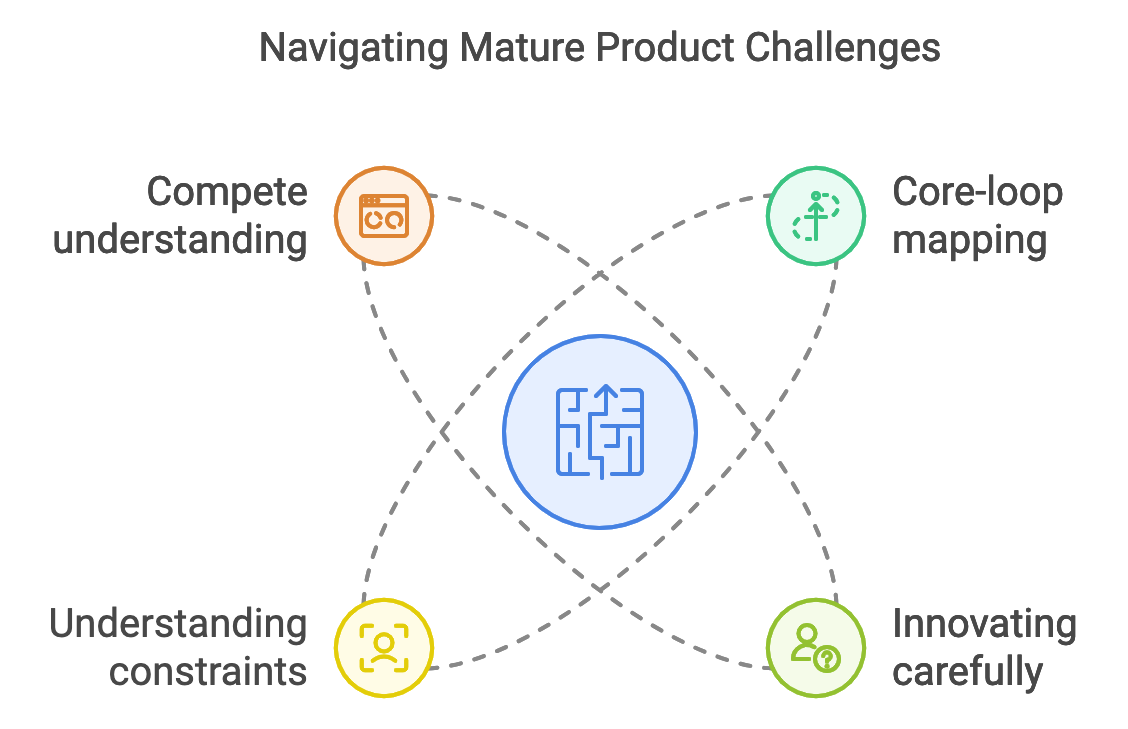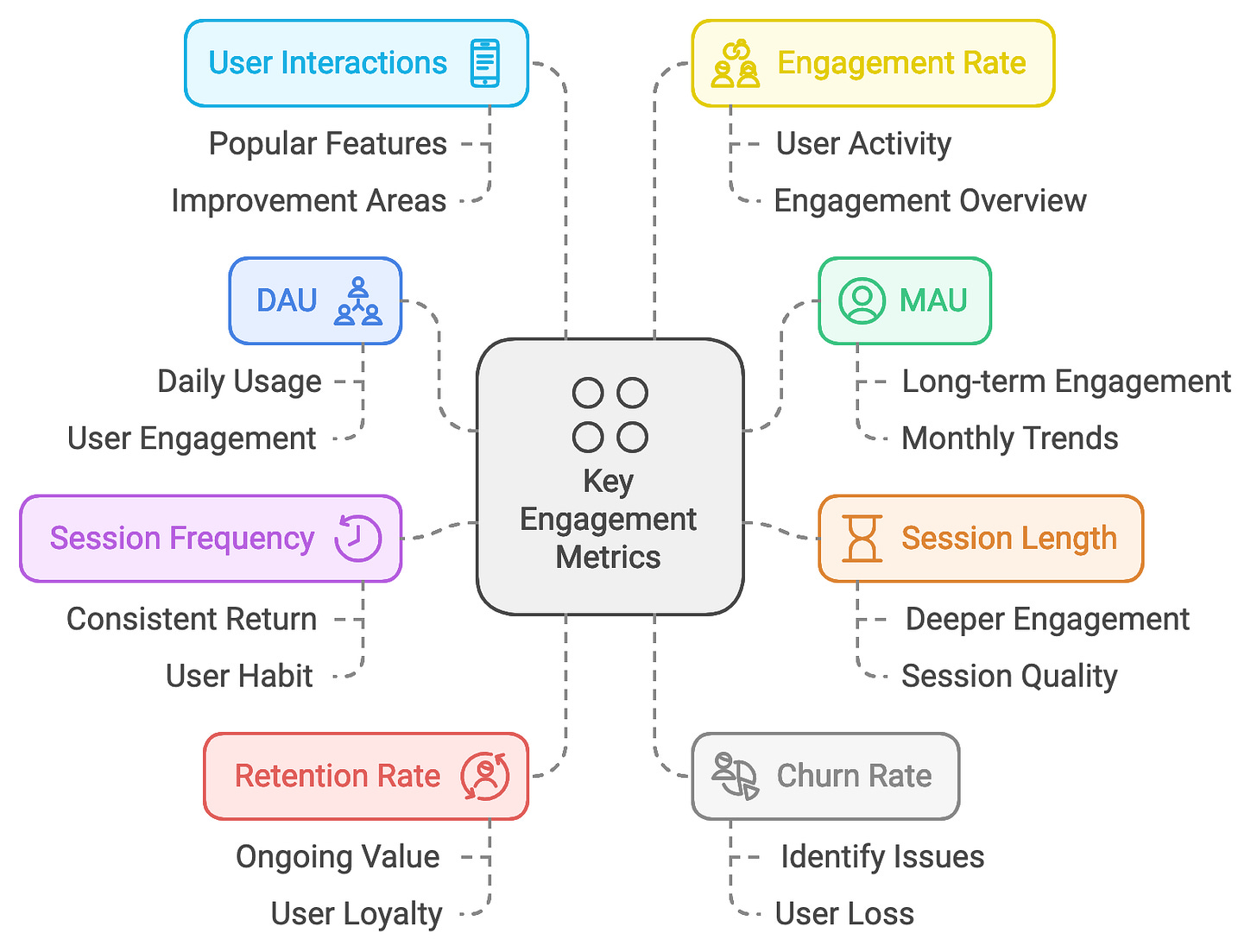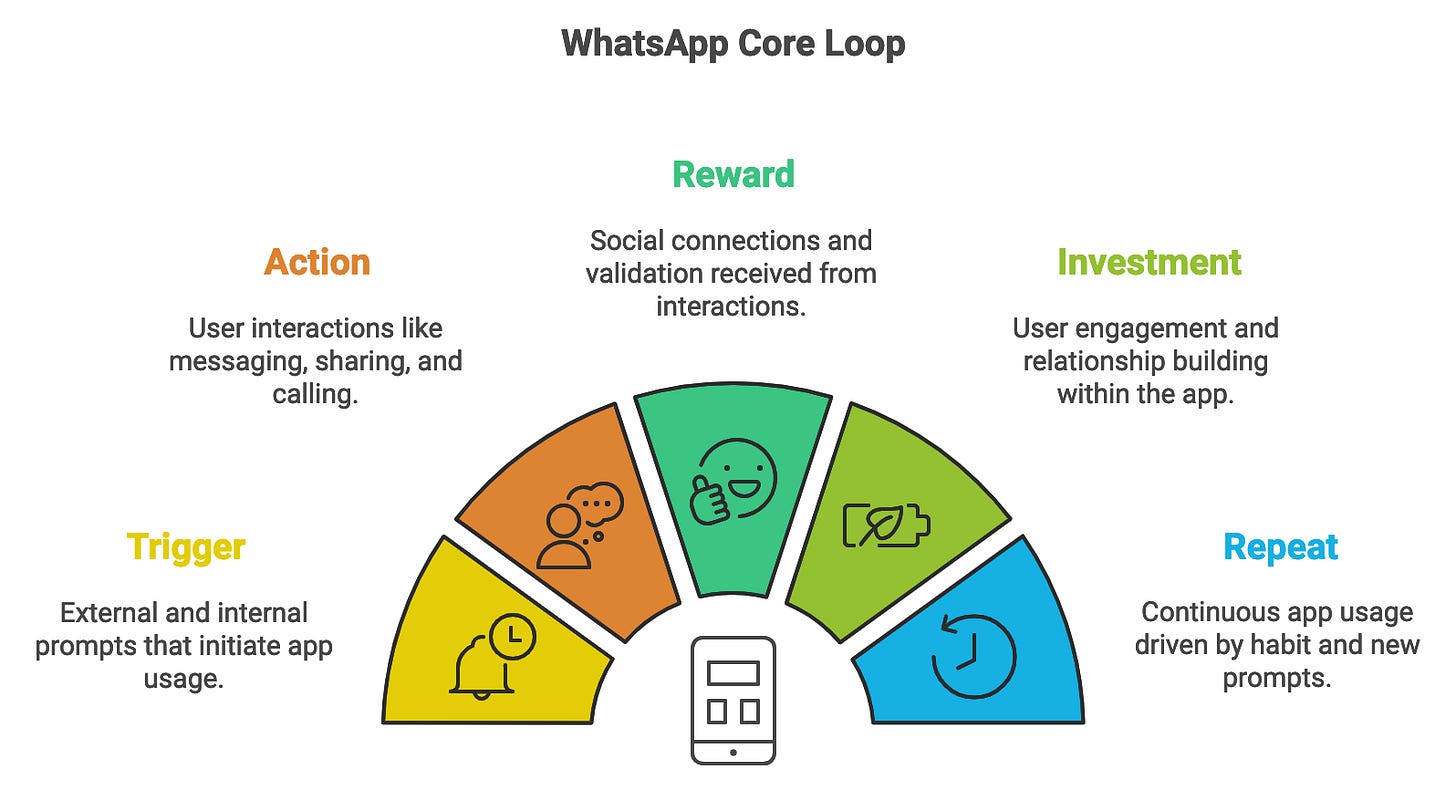If You were a WhatsApp PM, What Would You Build Next?
Product Strategy Interview - Planning and building features for a "Mature" product
Welcome to No BS Product Management, your weekly guide to mastering the product management journey—from breaking into the role to crushing it as an APM.
Each week, I share no-nonsense advice, practical tips, and real-world strategies to help you handle tricky scenarios, impress your stakeholders, and level up your PM game.
If you’re ready to stop guessing and start thriving in the world of product management, hit that subscribe button now! 🚀
When faced with questions like:
What would you build next for WhatsApp?
What can be the next differentiator for email?
How can an e-commerce company survive in a competitive market?
These questions are designed to assess a candidate’s ability to differentiate for a “mature” product. However, many online resources offer typical answers like “identify the problem, define personas, and choose metrics.” My aim here is to empower you to think as a true product manager by understanding the nuances of such questions and equipping you with the insights and methods necessary for you to apply such frameworks more effectively.
What Does a “Mature” Product Mean?
A mature product has existed for a while, traversed a cycle of exponential user growth, and now sees its patterns plateau. For WhatsApp, this plateau could be attributed to achieving peak penetration—users know the product inside and out, and their engagement patterns are well established. In terms of metrics, this means user acquisition or installs grow at a steady pace, significantly lower than during its peak period. Daily and weekly engagement patterns, along with retention rates, are stable; even a slight change could trigger concern within the company.
Planning for a Mature Product
Innovating for a mature product requires that new features enhance the core activities users have come to rely on without disrupting them. The risk of altering these core actions is that it could adversely affect all key metrics. Therefore, it’s crucial to recognize that any new feature should support the existing core loop of user behaviors rather than replace or complicate it.
Now the way to start thinking about new features for Whatsapp can be manifold as laid down below,
What could be the top metric of concern for WhatsApp at this stage?
Who are the underserved personas? What problems can be better solved, or what underutilized opportunities exist?
What is competition doing that WhatsApp isn’t?
Is there a natural pivot WhatsApp can make at this point that it isn’t currently pursuing?
When answering interview questions, it’s crucial to focus on one problem at a time. Choosing two or three from the above list can dilute your response.
The Metric of Highest Concern for WhatsApp
For mature products where the acquisition cycle has completed, engagement and retention become pivotal factors to influence. This is especially true for WhatsApp, as its user base encompasses nearly the entire global population, making growth rates somewhat out of reach. While there may still be opportunities to improve acquisition channels, enhancing engagement and retention lies more within our control.
However, improving engagement in a mature product isn’t straightforward. Users have internalized their app interactions, making their activities almost subconscious. Thus, adding new features necessitates a careful consideration of current activities to delight users without overwhelming or irritating them.
What does Engagement mean? What are the metrics?
Engagement measures how actively and frequently users interact with an app like WhatsApp. High engagement indicates users find value in the product and are likely to continue using it, while low engagement may suggest decreasing interest.
Key Engagement Metrics
Daily Active Users (DAU):
Unique users who interact with the app daily. High DAU indicates strong daily usage.Monthly Active Users (MAU):
Unique users who interact with the app at least once a month. Useful for tracking long-term engagement.Session Length:
Average time spent in the app during a single session. Longer sessions indicate deeper engagement.Session Frequency:
Average number of times users open the app in a specific period. More frequent sessions suggest consistent return.Retention Rate:
Percentage of users who continue using the app over a specific time after their first use. High retention signals ongoing value.Churn Rate:
Percentage of users who stop using the app over a specific period. Monitoring churn helps identify issues.User Interactions:
Total actions taken within the app (e.g., messages sent, media shared). Identifies popular features and improvement areas.Engagement Rate:
Ratio of active users to total users, expressed as a percentage. Provides a quick overview of user engagement.
Now, how to plan engagement improvement in Whatsapp - We do this by understanding the “core-loop” or the core activities performed by users on Whatsapp, and try to increase them delightfully. Let’s look at the core loop of whatsapp below:
WhatsApp’s Core Loop
Trigger:
External Triggers: Notifications for new messages, missed calls, or status updates prompt users to open the app.
Internal Triggers: Users develop habits that drive them to check WhatsApp without external prompts, such as staying connected or fearing missing out (FOMO).
Action:
Message Sending and Receiving: The most frequent action users take.
Media Sharing: Users share photos, videos, voice notes, and documents within chats.
Calls and Video Chats: Initiating voice or video calls for direct interaction.
Status Updates: Posting or viewing 24-hour disappearing stories.
Reward:
Social Reward: Satisfaction from social connection—keeping in touch with friends, family, and colleagues.
Validation and Acknowledgment: Instant responses and engagement from others (e.g., blue ticks for read receipts).
Information Gain: Chats providing crucial updates or discussions that deliver valuable information.
Investment:
Building Relationships: Frequent interaction strengthens users' perceived connections, making WhatsApp integral to their communication habits.
Customization and Group Management: Users customize their chats, embedding themselves deeper into the ecosystem.
Repeat:
Ongoing Triggers: New messages, status updates, or group activities continuously bring users back, restarting the loop.
Habit Formation: Repeated interactions and the reward system develop a habit of regularly checking and using WhatsApp.
Prioritizing Which Action to Increase
In order to improve the engagement, one has to increase any of the above actions. Why? Because each of these above actions are directly tagged to an engagement metric, for example - a notification “Trigger” is directly correlated to the number of daily sessions, Enhancing “Media share” with new capabilities like sharing disappearing pictures or videos, means opening up new use-cases and users to share more media, in turn increasing session time and number of sessions.
In real-world scenarios, prioritizing actions involves continuous monitoring of data patterns and a clear understanding of user personas. Here’s a structured approach to follow:
Map Actions to Key Metrics:
Identify core actions (message sending, media sharing, calls, status updates).
Metrics to track:
User Engagement (DAU/MAU)
Retention Rate
Churn Reduction
Evaluate User Behavior Data:
Analyze usage trends to understand which actions are most engaged with and which are underutilized.
Conduct cohort analysis to see how different user segments interact with features.
Assess Impact vs. Effort:
Prioritize high-impact, low-effort enhancements first.
Consider complex actions with high ROI for potential development.
Identify Bottlenecks and Opportunities:
Determine barriers preventing user engagement and explore enhancements to make core actions more appealing.
Consider Competition and Market Trends:
Competition Analysis: Major players like Telegram and Signal offer strengths and weaknesses compared to WhatsApp. For instance, Telegram has superior media sharing capabilities and customizable channels, which attract users looking for more versatile communication. Signal focuses heavily on privacy, appealing to security-conscious users. WhatsApp could leverage its existing user base and brand trust to introduce innovative features that enhance user experience without compromising on security.
Align with User Personas:
Tailor actions to resonate with WhatsApp’s diverse user personas:
Casual Users: Focus on actions that make personal communication easy, such as improved media sharing or voice notes.
Business Users: Enhance tools for customer interactions, like chat summaries or bulk messaging features.
Privacy-Conscious Users: Emphasize security features like disappearing messages or private media sharing.
What’s Next?
Now with this base of information, during the interview, you would need to make careful assumptions for each of the chosen areas, narrow down the problem statement and follow the framework - Goal, Persona, Problems, Solutions and Metrics to arrive at your answer. I will cover this framework in detail in upcoming articles.




